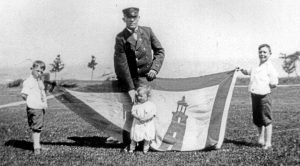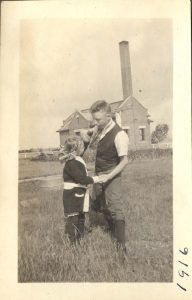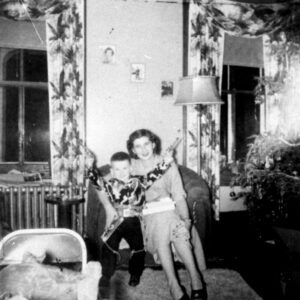Although it was an official government installation intended to guide ships safely through the Straits of Mackinac, the Old Mackinac Point Light Station was also home to several families, complete with pets and children. Between 1890 and 1957, several kids lived at the station, each experiencing and sometimes helping with the daily routine of operating a Great Lakes lighthouse.



Some of the first children to live at the station were members of the Marshall family. Although keeper George Marshall and his wife Maggie never had children of their own, their adopted son James lived with them before entering the Lighthouse Service himself in 1903. George and Maggie also adopted their 8 year old nephew, Chester. Chester and his two sisters, Ethel and Nora, came to Old Mackinac Point in 1908. The girls were adopted by their aunt, Sarah, who lived at the station with her husband, assistant keeper William Barnum. Several family photos show the Marshall children playing on the station grounds around 1910. James Marshall returned and took over keeper’s duties in 1919, and raised a family of his own at Old Mackinac Point, even building a playhouse on the station grounds. James’ children, Madonna, George, and Bernard, enjoyed playing in Michilimackinac State Park, which surrounded the station, along with the sons of assistant keeper Henrik Olsen. As a teenager, Madonna worked in the souvenir stand at the site of Fort Michilimackinac inside the park.


When John Campbell came to Old Mackinac Point in 1944 as the assistant keeper, he brought his children with him from their previous station on remote Huron Island in Lake Superior. His son, Dick, later recalled the strict regulations placed upon children living at the lighthouse, by that time under Coast Guard control. Dick’s older sister Helen didn’t spend as much time at Old Mackinac Point as her siblings, but she did get married at the station. Helen’s own son, Gary (John Campbell’s grandson), also spent a few months at Old Mackinac Point in the early 1950s. Today, Gary has returned to Old Mackinac Point, serving as an historic interpreter.









